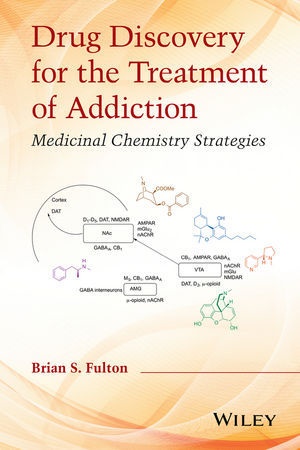Read more
Informationen zum Autor Brian S. Fulton is a Visiting Lecturer in the Department of Chemistry and Chemical Biology at Northeastern University and has taught courses in organic chemistry, spectroscopy, and pharmaceutical sciences and has taught a one-semester course, Medicinal Chemistry of Psychiatric Drugs, at Harvard University Extension School. From 1987 - 2005, Dr. Fulton worked as an industrial organic chemist in the US and Europe. He obtained his B.S. in Chemistry at Missouri State University and his Ph.D. in Organic Chemistry at Iowa State University. He has written 17 peer-reviewed publications and given 8 presentations at scientific meetings. Klappentext With addiction a key target for drug discovery efforts, this book fills an important and timely need for medicinal chemists who need to understand complex neuroscience issues. The author illustrates medicinal chemistry's prominent role in treating addiction and covers specific drugs of abuse including narcotics, stimulants, depressants, nicotine, and marijuana.* Interprets complex neuro- biological and pharmacological information, like the drug-reward system, for medicinal chemists* Emphasizes neurotransmitters and neurochemical mechanisms of addictive drugs* Pulls together information on the many potential drug targets for treating addiction* Stresses unique medicinal chemistry problems when describing pharmacology testing methods and drug development Zusammenfassung With addiction a key target for drug discovery efforts, this book illustrates medicinal chemistry's prominent role in treating addiction and covers specific drugs of abuse including narcotics, stimulants, depressants, nicotine, and marijuana. Inhaltsverzeichnis Preface xiii 1 What Is Drug Addiction? 1 1.1 Definitions 2 1.2 The Drugs of Abuse 4 1.3 Schedule of Controlled Substances 5 1.4 Some Facts From 2012 NSDUH Study 6 1.5 The Addictive State 8 1.6 Theories of Addiction 12 1.7 Comorbidity 13 1.8 Genetic Aspects of Addiction 13 1.9 Approved Medications for the Treatment of Substance Abuse and Addiction 16 2 Physiological Basis of Addiction-A Chemist's Interpretation 18 2.1 The Reward System 19 2.2 Neuroanatomy of the Reward System 21 2.3 Brief Review of the Central Nervous System and Addiction 22 2.4 Neurotransmitters and Their Targets 25 2.5 Neurocircuitry and Neurotransmitters in Addiction 32 2.6 Location of Receptors 62 2.7 An Example 64 2.8 Use of Biological Markers 65 2.9 Memories and Addiction 68 2.10 Stress the HPA Axis and Addiction 72 3 Behavioral Pharmacology and Addiction 76 3.1 Animal Models of Addiction 76 3.2 Self-Administration 80 3.3 Conditioned Place Preference 85 3.4 Tolerance 86 3.5 Extinction/Withdrawal 87 3.6 Reinstatement (Animal Models of Relapse) 87 3.7 Drug Discrimination 89 3.8 Operant Sensation Seeking Model 92 3.9 Use of Animal Behavioral Models 92 Acknowledgments 93 4 Medication Development for the Treatment of Drug Addiction 94 4.1 Lead Discovery 95 4.1.1 NIDA Addiction Treatment Discovery Program 96 4.2 Pharmacological Assays 103 4.3 Partial Agonist Approach 110 4.4 Allosteric Modulators 110 4.5 Functional Interactions Between Receptors 114 4.6 Multi-Target Drugs 121 4.7 Physicochemical Properties of CNS Drugs and Blood-Brain Barrier 124 4.8 Brain Imaging Agents 131 4.9 QT Prolongation 135 5 Medication Development for Narcotic Addiction 137 5.1 Pharmacology of Narcotic Addiction and Pain 138 5.2 Prescription Drug Addiction 139 5.3 Approved Medications 140 5.4 Medication Development 151 6 Medication Development for Stimulant Addiction 160<...

